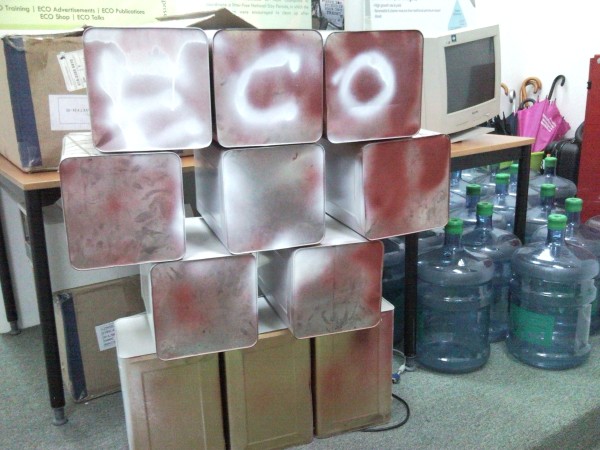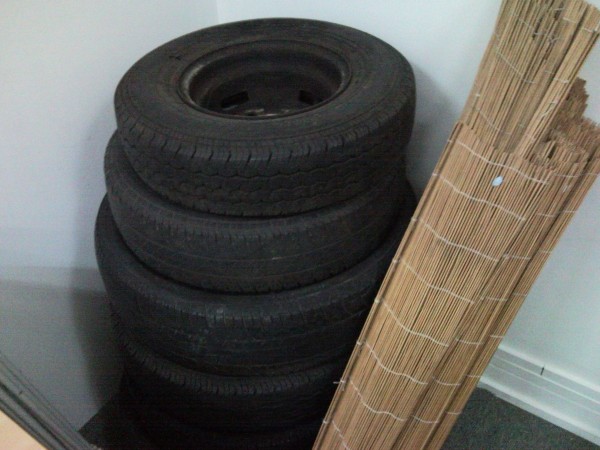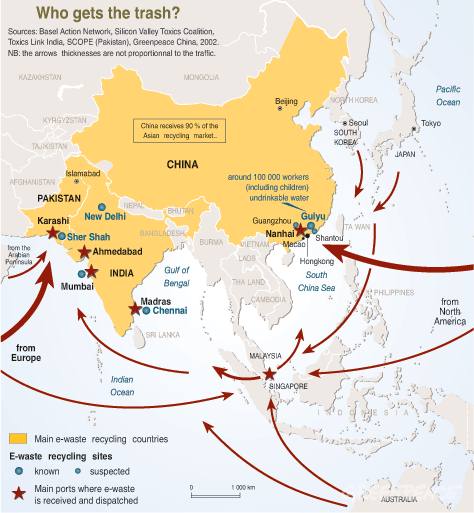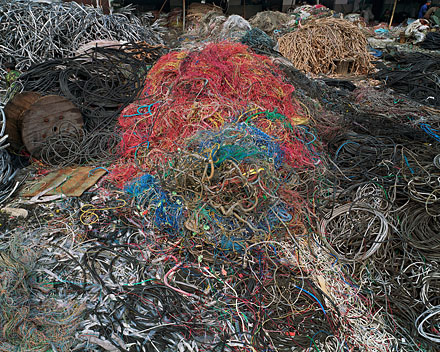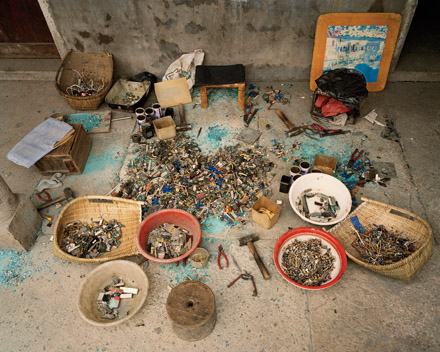Did you know?
So we have several items that would be considered as e-waste awaiting their fate here at ECO Sphere and Terence has been doing a great job with trying to make sure that they go to proper places to be recycled (see photos).
This brings me to the point of this article – E-waste. What is it and does Singapore have an e-waste market? And if so, how can you begin to recycle your e-waste?
Before we begin, what is e-waste? (adapted from CalRecycle.ca.gov)
E-waste is a popular, informal name for electronic products nearing the end of their “useful life.” Computers, televisions, VCRs, stereos, copiers, and fax machines are common electronic products. Many of these products can be reused, refurbished, or recycled. Unfortunately, electronic discards is one of the fastest growing segments of our nation’s waste stream.
The term “e-waste” is loosely applied to consumer and business electronic equipment that is near or at the end of its useful life. There is no clear definition for e-waste; for instance whether or not items like microwave ovens and other similar “appliances” should be grouped into the category has not been established.
Greenpeace has a great article that discusses the e-waste trail. According to them, in the 1990s, governments in the EU, Japan and some US states set up e-waste ‘recycling’ systems. But many countries did not have the capacity to deal with the sheer quantity of e-waste they generated or with its hazardous nature.
Therefore, they began exporting the problem to developing countries where laws to protect workers and the environment are inadequate or not enforced. It is also cheaper to ‘recycle’ waste in developing countries; the cost of glass-to-glass recycling of computer monitors in the US is ten times more than in China.
Demand in Asia for electronic waste began to grow when scrap yards found they could extract valuable substances such as copper, iron, silicon, nickel and gold, during the recycling process. A mobile phone, for example, is 19 percent copper and eight percent iron.
A paper was released in 2002 titled “Exporting Harm: The High Tech trashing of Asia” and it was prepared by the Basel Action Network, Silicon Valley Toxics Coalition and with contributions by Toxics Link India, Greenpeace China and SCOPE (Pakistan). If you’re interested to read more into it, it’s here!
Also, check out Edward Burtynsky’s (photographic) work on Recycling and E-waste via http://www.edwardburtynsky.com/ but you’d have to click around to find it! It should be under China>Recycling 🙂 Here are some of his works:
Well, now to the point of this article. Do we have e-waste recycling here in Singapore? Where does all our electronic waste go to when we dump them? All this because we have some computers in our office and need to clear them! So this is what we found out:
Did you know that the National Environment Agency (NEA) Singapore provides a list of collectors of recyclable materials and e-waste? Some of the common recyclables include metal scrap, multiple waste streams/electrical items/furniture/clothing, e-waste, glass waste, plastic bottles, printer cartridges, waste paper, wood/horticultural waste and tyre/rubber waste! More information here. While you’re at it… read this one by Eugene Tay which discusses electronic and electrical waste recycling in Singapore.
So, there is hope after all 🙂 If only more people knew and would choose the environment over convenience of putting e-waste into the rubbish bin. In addition, there is a market for household e-waste collection (apart from our usual karang guni/rang & bone man) since most of the e-waste collectors cater to industrial e-waste only. Furthermore, there is the issue of accountability and asking the right questions pertaining to the waste of the e-waste itself! Once the precious metals and re-usable are extracted, what happens to the remaining waste? Does anyone know? Would anybody care to know? Hmm, so where do we go from here?
Is there room for better management of our massive appetite for electronic products? Is there a demand for household e-waste collection and if so, who would be willing to be a glorified karang guni man? It is kind of depressing but then again, today I learnt that we do practice some level of industrial recycling although the companies we called up mainly catered to industrial sized waste (large amounts of e-waste and non-car tyres!) so, where do we go from here and more importantly… how do we get rid of our office waste in an environmentally sustainable manner?
Mel

